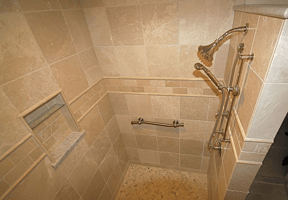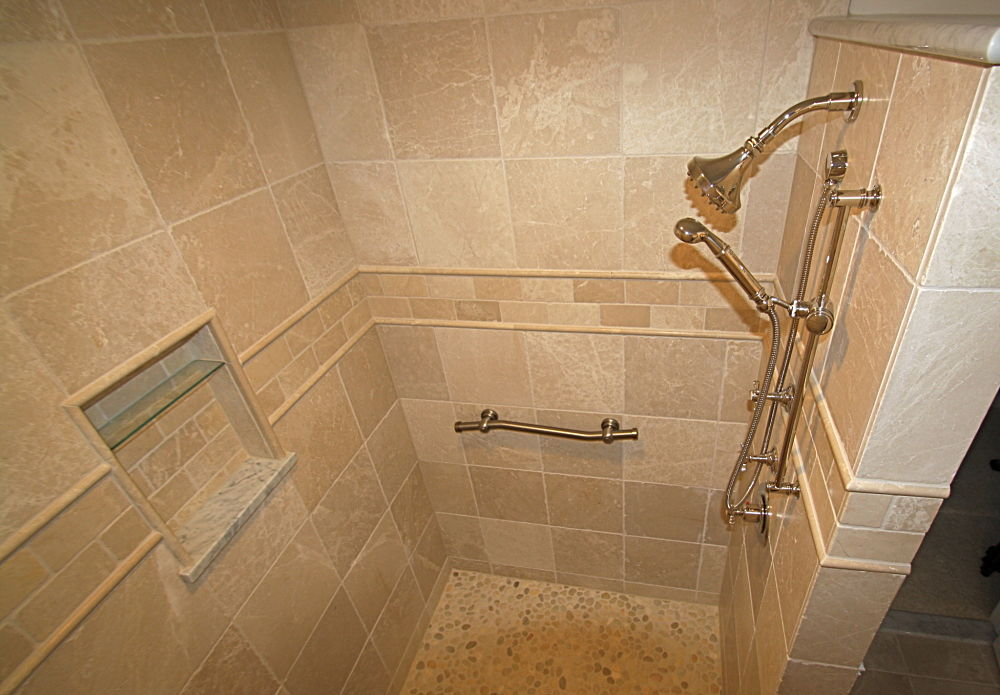 With all the rain we’ve had lately, conserving water is probably the last thing on your mind. However, if you are planning to remodel a bathroom, you should know about and consider some of the latest water saving products. They’re not only good for the environment, but they’ll save you money.
With all the rain we’ve had lately, conserving water is probably the last thing on your mind. However, if you are planning to remodel a bathroom, you should know about and consider some of the latest water saving products. They’re not only good for the environment, but they’ll save you money.
Bathrooms are the areas of a home that use the most water. Toilets account for 30 percent of water consumption by homeowners. Showers account for about 17 percent of water use, or 30 gallons per day for an average household. So, it makes sense to consider water-conserving products.
Water conservation affects everyone. In 1992, Congress passed the Energy Policy Act requiring builders to install only low-flow toilets in new homes. The Environmental Protection Agency (EPA) found that if one-in-ten American homes upgraded a bathroom with water saving fixtures, 74 billion gallons of water and $1.5 billion in utility costs could be saved each year. To achieve and increase these outcomes, EPA launched a partnership program in 2006, WaterSense, which brings together local water authorities, manufacturers, retailers and consumers to promote efficient use of water resources and develop products and services that meet this goal.
Products that conserve water and meet EPA standards now carry the WaterSense label.
Onondaga County plumbing codes require installation of low-flow water devices to replace existing fixtures when remodeling or building new construction.
Toilets
Prior to 1992, most toilets consumed 3-to-7 gallons of water per flush (GPF). Early low-flow toilets used about 1.6 GPF but did not adequately clear the bowl with one flush, thus defeating the purpose of replacing a standard toilet. Manufacturers have redesigned the toilets so that in most cases one flush will do the job. Low-flow toilets on the market today are designed to use gravity, water pressure or a combination of both to work efficiently using 1.6 GPF or less. EPA estimates that by installing a WaterSense toilet, you can conserve 4,000 gallons of water a year and save about $90 annually on your utility bills.
Products to consider:
Showerheads
Your morning shower will use about 25 gallons of water each day. Low-flow showerheads will cut consumption by 50-to-70 percent. Low-flow showerheads are inexpensive and easy to install. Efficient WaterSense showerheads allow a flow of 1.5 gallons per minute. Check out these products:
Faucets
Low-flow faucets can reduce water consumption by as much as 30 percent according to Consumer Reports. If you’re planning to remodel or replace bathroom faucets you may want to consider the following products:
However, if replacing a faucet is not practical, you can still conserve water by adding inexpensive low-flow aerators to your faucets. Low-flow aerators cost as little as $2-$3 apiece and conserve water by slowing the flow. You will need to check them periodically to be sure that they are working properly.
With the exception of Mirabelle, all of the manufacturers listed are WaterSense Partners.
When choosing bath fixtures, look for the WaterSense label to be confident that the product meets EPA water conservation standards.
What steps have you taken to conserve water in your home?


 With all the rain we’ve had lately, conserving water is probably the last thing on your mind. However, if you are planning to remodel a bathroom, you should know about and consider some of the latest water saving products. They’re not only good for the environment, but they’ll save you money.
With all the rain we’ve had lately, conserving water is probably the last thing on your mind. However, if you are planning to remodel a bathroom, you should know about and consider some of the latest water saving products. They’re not only good for the environment, but they’ll save you money.